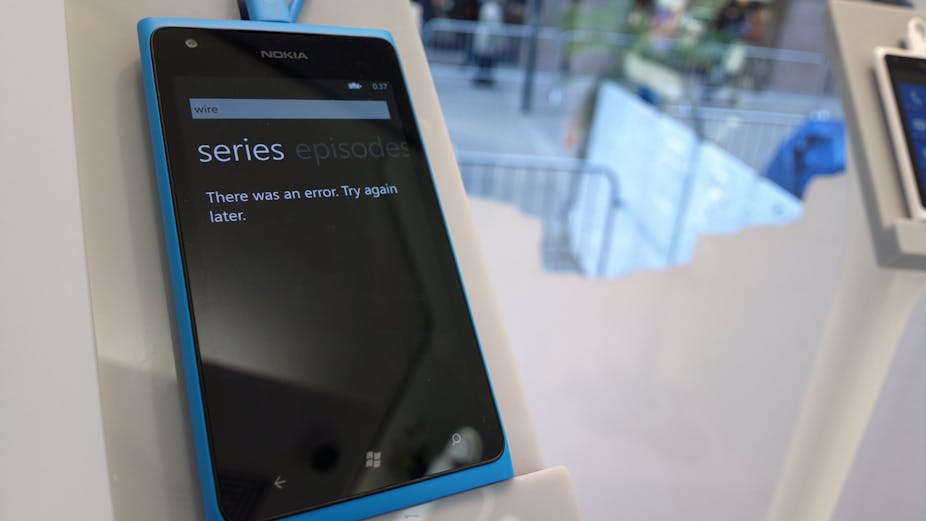The latest battle between mobile phone companies for customers is well underway as they prepare for the full introduction of 4G, the new superfast service that is supposed to allow unprecedented internet connection speeds in many cities by the end of the year.
The marketing teams at the top providers have gone into overdrive, offering every kind of package imaginable to secure their share of the market. Vodafone is offering Sky Sports on your mobile, O2 is “celebrating” the advent of “glorious” 4G with a bewildering array of data packages and Three has made a major play to undermine its rivals by simply promising to upgrade all its customers to 4G at no extra cost.
But before you sign up to that 24-month contract and shell out for a fancy new phone, you might want to consider a crucial caveat that makes the 4G revolution seem suddenly less mind blowing – it doesn’t really work inside.
Just a few years ago, 3G was rolled out, changing the way we use mobile phones forever. Since then, the service has been continuously upgraded and now offers download speeds of up to 40 megabits per second, enough to allow you to comfortably use the internet wherever you go.
4G promises even higher speeds of 100 Mbit/s but that promise depends heavily on the ability of providers to ensure good signal strength. Failure to deliver this would mean that many of the transmission improvements made in 4G are not achievable.

What we have to bear in mind is that there is a growing trend of urbanisation around the world, with 70% of the developed world living in cities. This is set to grow to 70% of the entire world in the years to come. That means the density of data usage in cities will be immense. It is no coincidence that 4G is rolled out in the most populous urban areas first, such as London and New York. In urban areas, the vast majority of the data delivery occurs indoors and not outdoors. Yet, traditional companies still focus on outdoor performance metrics when they make promises about what they can deliver. It is only in recent years that companies like RANPLAN have produced detailed simulators for indoor wireless planning because the complexity of calculating wave propagation indoors makes this hard to do.
For consumers, this means that the 4G rollout will not guarantee a better data delivery experience for indoor customers who already experience a bad signal under 3G. And it’s not just indoor customers; users standing in the shadow of buildings could also experience poor signal strengths. Unless nodes such as small-cells are deployed to improve signal penetration to indoor areas, the performance improvement under poor signal conditions is small.
Indoor data delivery

The importance of indoor data delivery has led to a surge in the number of small-cell start-up companies entering the market. Approximately 12 million small-cells will have been deployed by 2014, far exceeding the number of large cell towers in operation today. It has been argued that by deploying thousands of small-cells across the city, overall network efficiency will be improved, because the average distance from each user to any cell is shortened. We may even see small cell towers with robotic legs entering the market, which would mean that operators can shift their hardware to delivery a dynamic coverage.
On the other hand, it has been argued that the excess interference power generated by small-cells will actually weaken performances elsewhere in the city. Research using complex system simulators and stochastic geometry mathematics has proved that deploying more small cells will actually produce no effect on the overall system efficiency, because the excess interference generated cancels out the benefits. In seeking to improve indoor performance with small cells, one would degrade outdoor performance by roughly an equal amount.
Alternative methods of improving indoor data delivery include using a lower frequency band, such as Vodafone’s 800 MHz 4G system. Low frequency transmissions are less vulnerable to signal decay but these bands are not available to all operators. But even this may not be a foolproof option, because the interference power is also increased proportionally.
The economic benefits of 4G to consumers and businesses are not yet clear. What is clear, however, is that the success of 4G, and indeed 5G, will depend on whether it can provide the desired data delivery speeds to indoor users. That is not just because most mobile data demand occurs from indoor areas, but also because most technological improvements require good signal strength, which is usually found outdoors. On the surface, small-cells seem like a winning solution, but digging deeper, research has shown that the indoor benefits come at the expense of outdoor degradation. Worse still, technological innovation is competing with improvements in building materials. It turns out that many heat insulating materials used today to improve energy efficiency also effectively shield buildings from communication signals.
Regardless of what the mobile phone companies will tell you to sell you an upgrade, we are not as 4G ready as they would have you believe.

